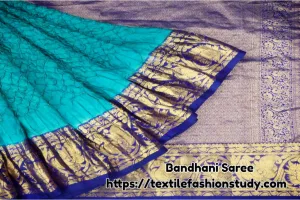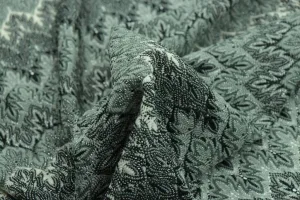Table of Contents
Definition of mercerizing process?
The definition, mechanism and effects of mercerizing are important to know when a mercerizing process changes the physical properties of the material. Mercerizing is one part of wet processing technology. Mercerizing is a special type of treatment. Mercerizing is done to get some special properties of the textile materials. Through the mercerizing process the physical properties of the material change. After the scouring and bleaching process, mercerization is done.
Mercerizing is the process of subjecting a vegetable fiber to the action of a fairly concentrated solution of a strong base (Sodium hydroxide 50-70 deg Tw and 18 degree Celsius temperature) so as to produce great swelling with resultant changes in the fiber structure, dimensions, morphology, and mechanical properties.
Mechanism of Mercerizing Process:
We know that fiber cell structure is different from one to another. Some cell structure is triangular, some are oval, some are hexagonal, some are zigzag, and many more. When light falls on that cell it reflects the light as per its cell structure. Sometimes this reflection is regular, sometimes it is not. It affects the luster of the fabric’s surface. For getting a regular reflection from the fiber it passes through a process called mercerizing process.
By mercerizing process, the strength of the fiber increases up to 20-30%. Cotton fiber’s shape becomes round when it shrinks in the solution of caustic soda (NaOH). The lumen becomes small and the cell wall becomes greater, for this reason, the strength of the fiber increases. The surface of the fabric become fine and light reflects on it constantly; so the luster of the fabric increase, and the swelling power of the fiber also increases. Generally, low-twisted yarn is suitable for mercerizing. Mercerized fabric is more suitable for dyeing and printing than bleached fabric.
Effects of Mercerizing Process:
Different types of changes are occurred for mercerizing in the cotton fabric. The following changes are the most important:
- Shrinkage in the area of the fabric.
- Tensile strength of the fabric increases.
- Fabric luster also increases.
- Hygroscopicity of the fabric increases.
- The capability for absorbing dyes increases.
- Preferential absorption of sodium hydroxide during the treatment.
- Mercerizing increased action of lower temperature.
- Possible compound formation soda cellulose.
The luster of the fabric is the most vital point. The attraction of the fabric depends on its luster of the fabric.
The Luster of Fabric:
The fabric luster depends on various factors. They are as follows:
- Cross-section of the fiber.
- The staple length of the fiber.
- The wall thickness of the fiber.
- The concentration of Sodium hydroxide.
- The temperature of the mercerizing solution.
- Percent stretch.
- Yarn construction.
- Yarn twist.
- Doubling of yarn.
- Degree of singeing.
- Application of tension.
- Rate of drying.
Mercerizing increases the luster and strength of the fabric. Generally it is done for cotton. Mercerizing depends on the requirement of the buyer. The price of mercerized fabric is higher than bleached fabric.






1 comment
Vimal.M
Xcellent